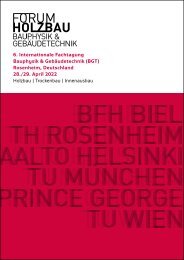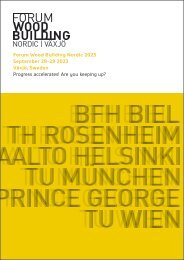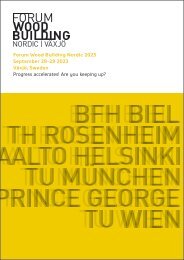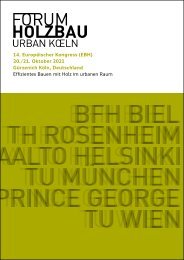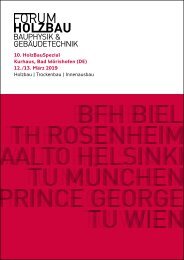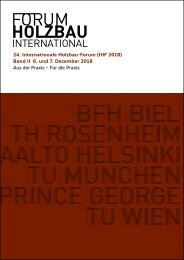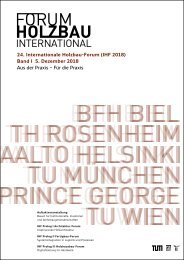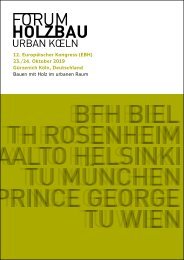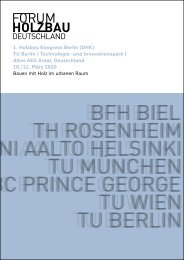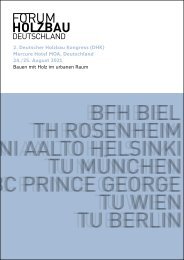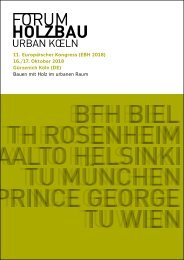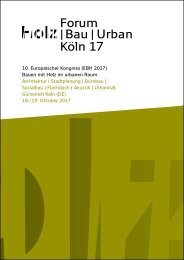25. Internationale Holzbau-Forum (IHF 2019) - Band III
Erfolgreiche ePaper selbst erstellen
Machen Sie aus Ihren PDF Publikationen ein blätterbares Flipbook mit unserer einzigartigen Google optimierten e-Paper Software.
<strong>25.</strong> <strong>Internationale</strong>s <strong>Holzbau</strong>-<strong>Forum</strong> <strong>IHF</strong> <strong>2019</strong><br />
Investigation of lateral torsional buckling of timber beams | N. Köppel, J. Töpler, U. Kuhlmann 3<br />
Investigation of lateral torsional<br />
buckling of timber beams subjected to<br />
bending and axial compression<br />
1. Motivation<br />
Due to the increasing demand for long-spanning material-efficient timber structures, the<br />
design of slender members is getting more and more important. Trussed beams for<br />
example are ideal for big spans because of their low and efficient material consumption<br />
(Figure 1). These structures are typically loaded by a combination of normal force, shear<br />
force and bending moment. While short beams reach the maximum load bearing capacity<br />
due to exceeding of the maximum tensile and compressive strength (cross-section failure),<br />
stability failure is usually dominant for slender members. This is characterized by<br />
excessive deformations. And the resulting additional internal forces due to imperfections<br />
and effects of second-order theory, that may exceed the load bearing capacity. Latest<br />
investigations [1] to [4] have shown that the design methods provided by Eurocode 5 [5]<br />
for lateral torsional buckling of timber beams subjected to combined bending and compression<br />
tend to be conservative and do not allow an economic design.<br />
Eurocode 5 provides two design concepts for slender timber members, where one is the<br />
effective length method and the other is one based on calculations of second order theory.<br />
In both methods the material specific behaviour of timber is highly simplified. By taking<br />
the elasto-plastic material behaviour under compression and the size effect on the tensile<br />
strength into account, high reserves of the load-bearing capacity can be activated for<br />
slender timber beams.<br />
This material specific behaviour of timber can be considered either in numerical (FEM) or<br />
analytical models. The generated results can be used for the verification of the design<br />
formulas of EC5 [5]. Analytical models have proven to be very powerful in the past [6],[7]<br />
and are also the basis of the effective length method for lateral torsional buckling in<br />
current EC5 [8].<br />
However, the mentioned and significant material specific behaviour of timber has not yet<br />
been adequately captured with these models.<br />
Figure 1: Trussed beams subjected to bending and compression, Lignotrend Produktions GmbH [9]<br />
71



